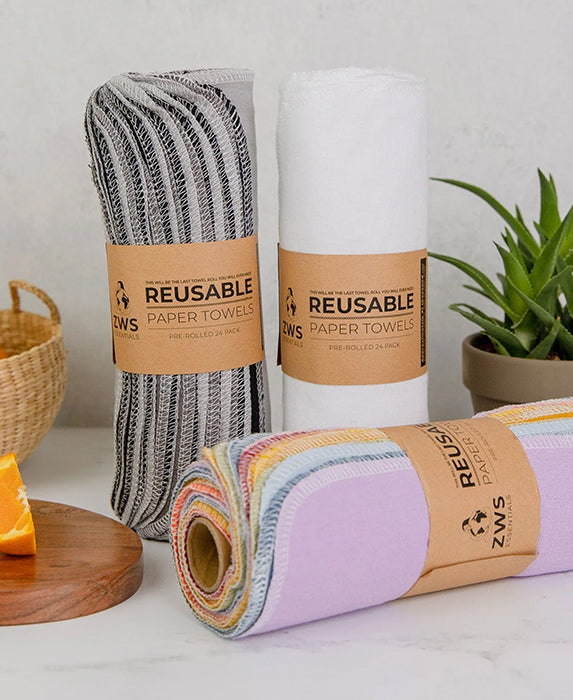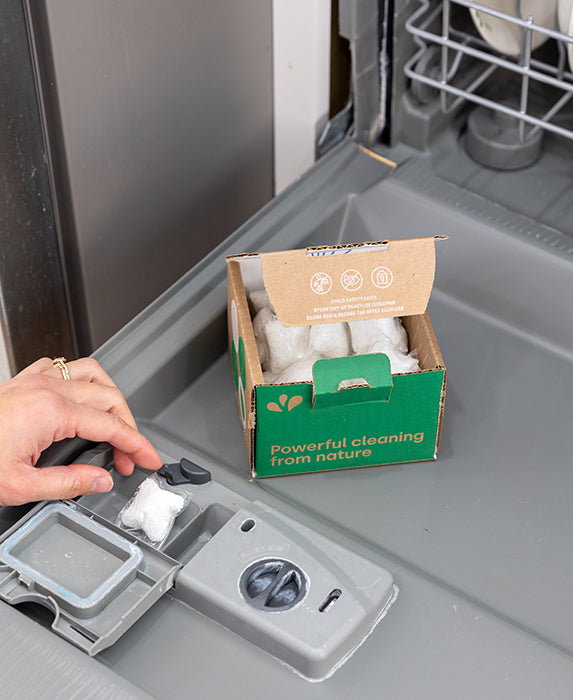There’s a movement happening in the clothing industry. It’s a movement I’m sure we’ve all seen: Big brands claiming to use recycled products, treat their workers fairly, and have plans to be sustainable by 2020-something. But what does sustainability really mean in the clothing industry?
A few things really, but the main one is asking more questions. What’s the brand’s mission? What materials do they use? Do they have any third-party certifications? Are there any non-profits they support? These answers can be incredibly hard to find. That’s where we come in. EarthHero is committed to making transparency easy. Here are our top tips for choosing sustainable clothing!
Eco-Friendly Dyes
It’s normal to see companies using plastisol ink when screen-printing designs on clothing because it’s cheaper and easier to use. However, plastisol ink contains a powder called polyvinyl chloride (PVC) resin, which is highly toxic! An alternative? Water-based ink! Water-based ink is so sustainable that if the article of clothing is recyclable before printing, it’s recyclable with the print! Clothing with water-based ink also sinks into the fabric, so it’s super comfortable to wear! Don’t believe us? Check out Seek Dry Goods, an eco-friendly company that uses this ink in their production.

Another type of eco-friendly printing involves plant-based dye. This technique has been around for hundreds of years, but has started making a comeback because it’s so sustainable! Using plant based dye means using different types of plants or food to color the clothing. Since plants are compostable, this doesn’t affect the textile’s end of life in any way. It’s also a super fun craft to try at home!
Sustainable Materials
There are so many sustainable materials out there, and it can be hard to know which ones work best for your lifestyle. Do you prioritize comfort? Are you super active? Is there a specific fit you’re looking for? Don’t worry, there’s sustainable materials for every occasion! Some of our favorites are rPET, Organic Cotton, Tencel™, and Hemp. Check out what we think about each!
Recycled Polyester
A common concern about recycled polyester, also known as rPET, is whether it’s sustainable? The simple answer? Kinda. rPET gives us a way to make a type of resource-intensive material that consumers love eco-friendly. It allows us to divert materials out of the landfill, and it takes less energy to use, around 75%, than regular polyester. It’s important to know that when washing materials with rPET, or any synthetic materials, microplastics, and microfibers can be released into the water. You can use items such as the Cora Ball to help you catch these materials!
Organic Cotton

Cotton! It’s such a common material in America that we see it in almost every piece of clothing! But why is cotton bad? Well first, traditional cotton uses pesticides, harsh chemicals, leads to toxic runoff into nearby water sources, and can cause serious medical conditions for the farmers working with it! Organic cotton is different though. Organic cotton doesn’t allow the use of any synthetic chemicals! It’s not only better for the environment, but it’s better for people too! Why would you want to wear a shirt that has so many harmful chemicals thread into every fiber when given the option to wear something completely natural and safe. Remember, skin is the largest organ in the body, so we need to protect it.
Tencel™
You may have noticed that there’s a trademark on Tencel™. That’s because it’s a brand and a material! This wood-based fiber is taking the world by storm. Tencel™ starts out as wood, then is soaked in amine oxide, and BAM!, it’s now fiber that can be spun into clothing. A super cool process if you ask us. Tencel™ takes less than half the water and half the energy to make than traditional cotton. It’s also completely biodegradable!
Hemp
Hemp! Like cotton, this is a material that we’ve been working with for hundreds, if not thousands of years! But what’s so good about Hemp? It’s less water intensive, grows quickly, and requires little land due to growing so close together! Farmers also love it because hemp blocks out the ability for other weeds to grow almost entirely! Hemp also requires no pesticides or other harmful chemicals. This means, just like organic cotton, wearing it is good for your skin! Hemp also soaks up natural dyes and inks, making the entire piece of clothing sustainable!
Shop Secondhand
The biggest issue we see in fast fashion today is that there’s constantly a new trend. In fact, people have said fast fashion celebrates 52 different seasons, that’s a new trend being released every week! That’s why thinking before you buy something is so important. Questioning yourself stops impulse buying, which is great for the environment and your wallet!

If you do need or want new clothes, see if you can find it secondhand first! Thrifting is like a fun scavenger hunt for hidden treasures! If you don’t know where to start, some stores that carry second-hand clothing are Plato’s Closet, GoodWill, ThredUP, PoshMark, and so many more! The most important thing is keeping clothes out of the landfill. If you can’t find it second hand, go quality. If you buy something that is good quality, you’ll be able to wear it again and again!
End of Life
If you scroll down to the product details on any item in EarthHero, you’ll see a section of end of life. This section tells the consumer what to do with the product they’re buying when its use is up. This is a big question in the clothing industry. What other option do we have besides recycling the material? Check out below a few ways to keep your current clothes out of the landfill!
Biodegradable or Compostable

Some materials are biodegradable or compostable, meaning they are not harmful to the environment. This creates a circular system, reducing the waste of the product completely! An example of this is Fulton’s new Plant-Based Shoe Insole. This insole is mixed materials, some are biodegradable while the cork is compostable. However, not all materials have a simple end of life process. What is simple though, is EarthHero doing the research for you so all you have to worry about is following the step-by-step instructions on the product page!
Repairing
The best way to be sustainable in the clothing industry is to use what you have! Look at what you have and figure out what steps you can take to preserve it. Have a hole in your jeans? Sew it up with some thread from your local craft store. Don’t know how to? Ask a friend or search online for any tutorials. If you can’t fix it, make it into something new! You can make amazing rags with t-shirts you don’t wear anymore, or make a small bag out of an old pair of jeans. Or, you can just donate it to a place the textile will be recycled and created into something new!
Long story short, shopping for sustainable clothing can be difficult. There are so many questions you have to ask, so much research to do. That doesn’t mean we shouldn’t try though. And remember, small changes can make huge differences!









